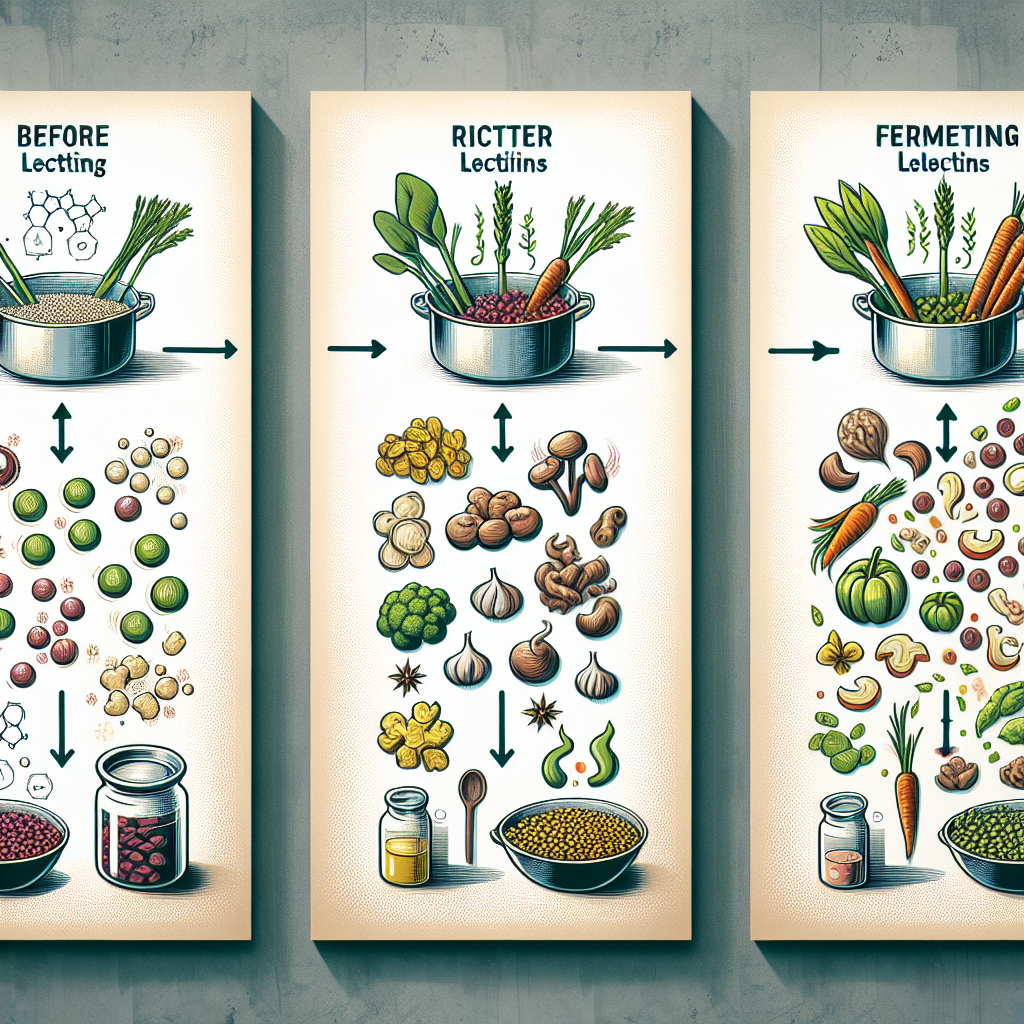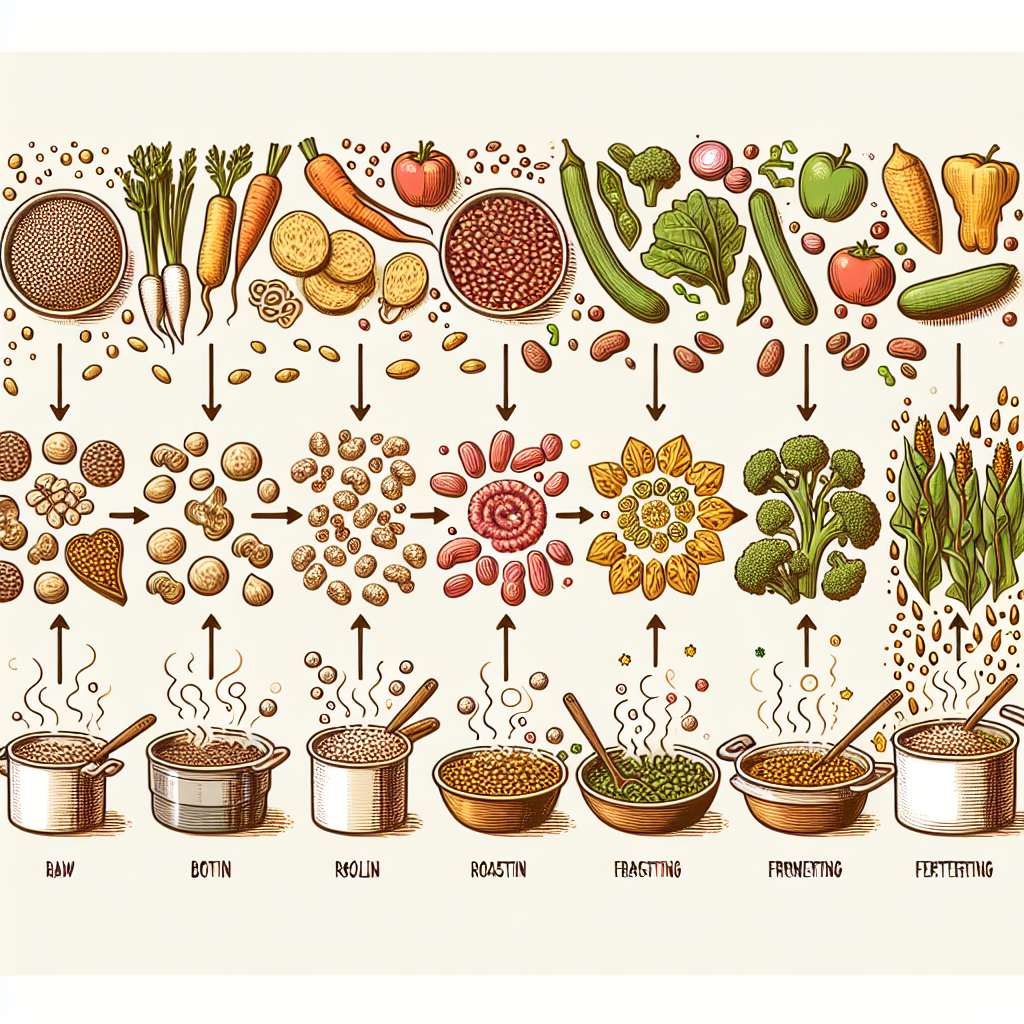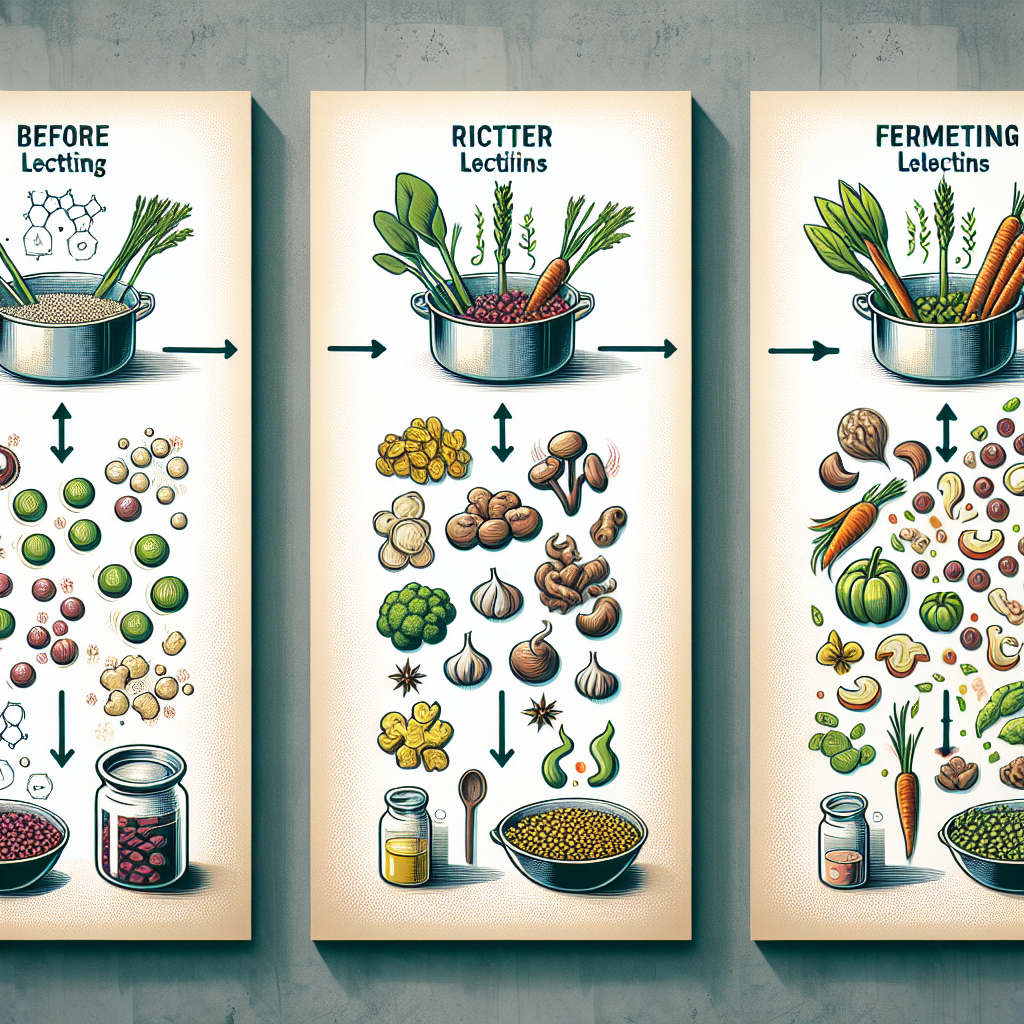With the title “The Influence of Cooking Methods on Reducing Lectin Content in Foods,” you’re about to explore a fascinating part of culinary science. This article enlightens you on the power of certain cooking techniques to significantly diminish the amount of lectins, a type of protein found in a variety of foods, which exist in our diets. Becoming knowledgeable about this subject may help you make more informed decisions in your own meal preparation, potentially leading to improved digestion and health. So, brace yourself to discover the science behind those magical recipes you whip up in your kitchen!
The Influence of Cooking Methods on Reducing Lectin Content in Foods
When you’re enjoying a lovely meal, it’s not often that you stop to consider what’s happening to those nutrients on a microscopic level. But maybe you should, especially when it comes to lectins. Why? Because there are particular cooking methods that can significantly reduce the lectin content in foods. This is important as some forms of lectins can negatively impact health. So, let’s get down to the nitty-gritty and look at how different methods of cooking can help cut down on those pesky lectins.
Boiling
Effectiveness of Boiling in Reducing Lectin Content
One of the most prevalent methods of cooking is boiling, and it’s pretty effective when it comes to lectin reduction. In fact, boiling at high temperatures for a certain period of time can destroy the lectin activity. The best part? It’s a simple and zero-fuss process that can be used for a range of foods.
Factors Affecting Lectin Reduction
It’s not just the act of boiling that cuts down on lectin content; there are factors like duration, temperature, and the kind of food you’re boiling that play a role too. Generally, boiling for longer durations at higher temperatures is more effective.
Preparation and Boiling Times for Different Foods
When boiling different types of foods, your prep, and boiling times may vary. Foods like grains and pulses generally take longer, but your patience will be rewarded with lower lectin content.

Blanching
Lectin Reduction through Blanching
Blanching is another cooking method that can reduce lectin content. Here, the food is initially dipped in boiling water for a specified duration and then quickly cooled off in cold water. This method is especially effective in reducing heat-sensitive lectins.
Comparison to Other Cooking Methods
Though not as thorough as boiling or pressure cooking, blanching still stands potent in lectin reduction. It is quick and convenient, particularly dealing with vegetables, which need to retain their color and texture.
Best Practices for Blanching
For effective lectin reduction through blanching, make sure the water boils before you add the food in. Use enough water to allow food to tumble freely and take note of the appropriate time required for different types of food.
Fermentation
The Role of Fermentation in Lectin Reduction
The wonderful process of fermentation works wonders in reducing the content of those pesky lectins. One of its most vital roles is breaking down the lectins and making them less harmful.
Types of Fermentation and Their Effects
There are different types of fermentation, such as lactic acid fermentation, and each of them has distinct effects on the lectin content. They help neutralize these compounds and also have other health benefits.
Examples of Fermented Foods
There are several foods like yogurt, kombucha, and kimchi, that go through the fermentation process and have reduced lectin levels.

Soaking and Sprouting
The Impact of Soaking on Lectin Reduction
Soaking doesn’t involve any heat, but it sure makes a significant dent in the lectin content of foods. When you let food sit in water for a couple of hours or overnight, it slowly starts reducing the number of lectins.
Benefits of Sprouting
Sprouting is another great way to take down the lectin content. Besides lectin reduction, sprouting also increases the nutritional value of the food.
Recommended Soaking and Sprouting Times
Different foods require different soaking and sprouting times. For example, beans typically need a longer soaking period compared to most seeds and nuts.
Pressure Cooking
Lectin Reduction by Pressure Cooking
Pressure cooking with high heat in a sealed environment can be a surefire method of taking down lectin levels. Essentially, it’s similar to boiling, just more intense.
Comparison to Traditional Cooking Methods
Pressure cooking cuts the cooking time to a fraction and is often more efficient at lectin reduction than traditional cooking methods.
Tips for Effective Pressure Cooking
Remember to monitor your pressure cooker and adjust the heat as needed. High pressure for an extended time can precisely do what you’re aiming for – lectin reduction.
Slow Cooking
Decreasing Lectin Content through Slow Cooking
Slow cooking involves long cooking times at low temperatures. While it’s an excellent way to infuse flavors, it’s not the most effective method for lectin reduction.
Advantages and Disadvantages of Slow Cooking
While the benefits include convenience and flavor parallel to none, the downside is it doesn’t reduce lectin content as much as other cooking methods when used alone.
Optimal Slow Cooking Temperatures and Times
Operating at the higher end of your slow cooker’s temperature range can provide better results in terms of lectin reduction.
Roasting and Baking
Impact of Roasting and Baking on Lectins
Roasting and baking can also reduce lectin content, the secret lies in the heat breaking down the structure of these compounds.
Temperature and Duration for Effective Reduction
Higher temperatures and long durations often lead to better lectin reduction when roasting or baking.
Tips for Roasting and Baking Foods
Ensuring ample heat transfer by not overcrowding the pan can make a difference. Remember, the heat has the main job in lectin reduction.
Grilling and Barbecuing
Lectin Reduction in Grilled and Barbecued Foods
Grilling and barbecuing are cooking techniques that can help reduce lectin levels, but they might not be as efficient as boiling, pressure cooking, or fermentation.
Potential Risks and Precautions
While these techniques add a great smoky flavor, be cautious as they might lead to the formation of potentially harmful compounds if not done correctly.
Enhancing Lectin Reduction while Grilling
To enhance lectin reduction, consider boiling food before grilling or barbecuing it.
Combining Cooking Methods
Combined Techniques for Maximum Lectin Reduction
For optimal lectin reduction, consider combining different methods. For instance, you can soak and sprout your grains before boiling them.
Sequential Cooking Methods
You can further experiment with sequential cooking methods like fermentation, followed by baking to significantly reduce lectin content.
Recipes and Examples
You are not limited to specific foods or recipes. Feel free to experiment with different foods and cooking techniques and see how it influences the lectin content.
Remember, the key is not necessarily eliminating lectins altogether but reducing them to a manageable level that your body can comfortably handle. Happy cooking!
